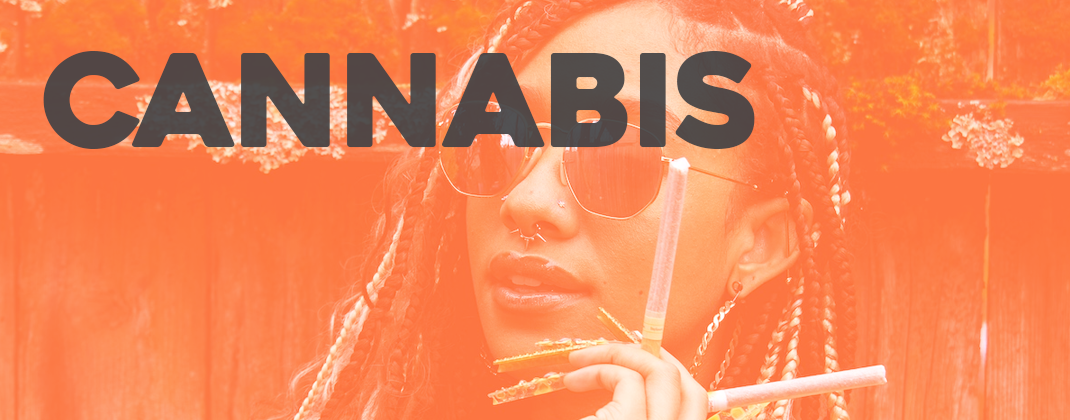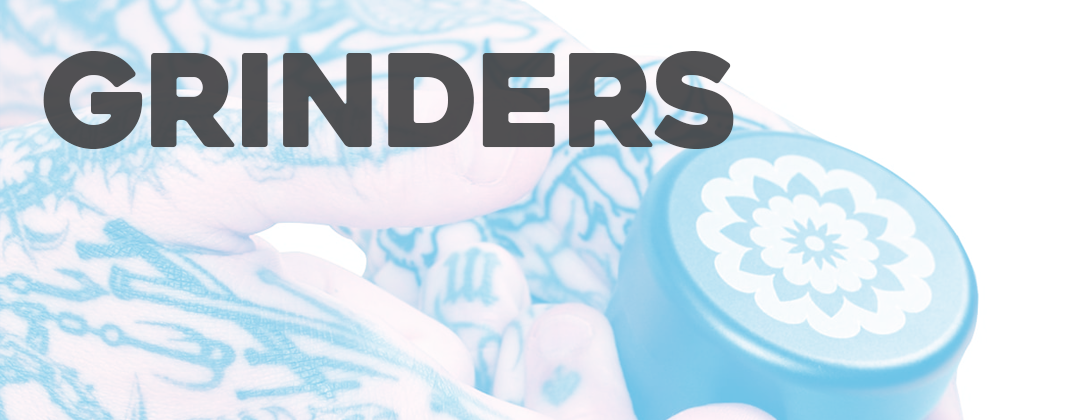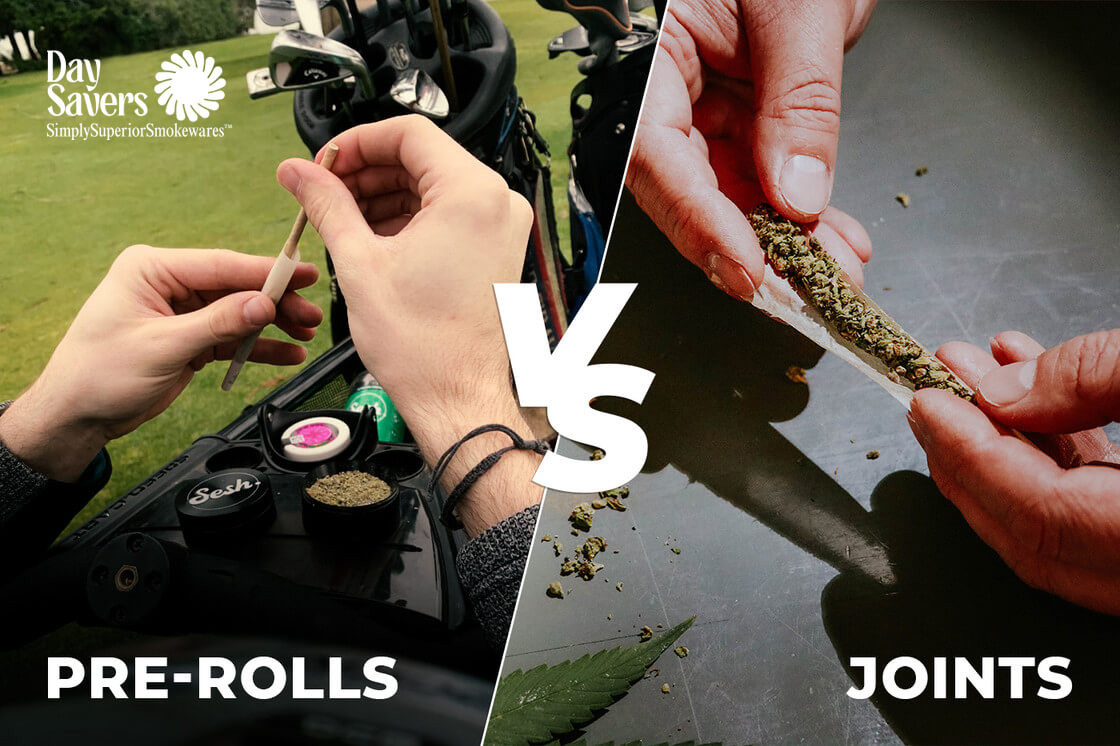Joints vs. Pre-Rolls - What is the Difference?
Posted by DaySavers Team on Mar 17th 2022
What is the difference between a pre-roll and a joint? In simple terms: there is no real difference between pre-rolls and joints. They both consist of a wrap or paper and ground flower. The only difference is that pre-rolls are a relatively new term introduced during the legalization period, in which legal cannabis sales began in the US. Pre-rolls are essentially “pre-made joints” that cannabis brands can offer as an additional option to their standalone flower. We also can now purchase pre-rolled cones and pre-rolled blunt papers, allowing the consumer the opportunity to pack their own choice of flower and customize their smoking experience.
On the other hand, joints have been around for far, much longer. Joints have been and will continue to be smoked for years to come. We’ve seen a variety of joints throughout history using a collection of different materials. Traditionally, joints consist of ground flower and some type of rolling paper. That’s why they’re often referred to as the simplest of the bunch, and you’ll usually hear the word joint used more often and causally in conversation.

Joints
While cannabis has been smoked for thousands of years through hookahs and pipes, it wasn’t until the late 1900s that the invention of the joint came to be. Similar to the design of a cone-shaped cigarette but rolled with flower instead of tobacco. However, back in the earliest recordings, it was common to mix tobacco with cannabis, coining another word known today as a “spliff.”
To assemble a joint will require a few added materials. Joints consist of flower, rolling paper, a filter, and a method for sealing it tight. They each provide a vital key to the success of the joint. When used together correctly, you’ll achieve an award-winning joint deserving to be smoked.
History of Joints
It’s not hard to spot the cultural ties that Mexico has influenced on the joint. The earliest recorded everyday use can be dated as far back as 1850 in Mexico. A pharmacist at the University of Guadalajara first noted that laborers were combining marijuana with tobacco in their cigarettes. Even the word “roach” (burnt or smoked part of the joint) got its name from the Mexican song “La Cucaracha,” which sings a tune about a cockroach that can’t get up because he has no marijuana to smoke. During the same time, a publication in “The Boston Medical and Surgical Journal” would offer a surprising treatment for respiratory problems: a mixture of cannabis, belladonna leaves, and a small amount of potassium nitrate. They thought this would help patients increase oxygen flow and decrease asthma attacks.
Prohibition Era
The prohibition of alcohol had a huge part in increasing cannabis consumption. In the 1920s, cannabis joints became the more desired and obtainable option. Speakeasies were quickly popping up around the country, providing an illegal underground venue where you could sip on cheap whiskey and listen to some smooth jazz. As New Orleans musicians began touring over the country, they spread these iconic tunes and these newfound “jazz cigarettes” joints around. As word spread, popularity boomed! At this time, it was still legal to roll up and smoke cannabis in public.
Reefer Madness
Eventually, after a series of restrictions and the debut of the title “Reefer Madness,” a 1936 film that portrays teenagers who experience various tragedies after being induced to smoking cannabis, the Marijuana Tax Act of 1937 was passed federally. This outlawed the possession and sale of the cannabis joint and possession of cannabis. At this time, the media was heavily focused on joints and the discredited notion that cannabis was being used to drug children and drive them insane.

The Civil Rights Movement
The 1960s represented an era of change, individuality, and freethinking. This was when people started questioning and changing their attitudes towards authority. Those adults who had been raised to believe the “Reefer Madness” brainwashing realized they had been misled. Smoking a joint wasn’t going to drive people to violent madness but unite as a symbol of non-violent protest of a severed system. Bringing a community together through the power of peace, love, and the rally for cannabis.
Hippies reinvented joints during this timeframe and turned them into what we know today. They would make jewelry and smoking accessories that could be used to discreetly disguise roach clips and other paraphernalia. This allowed toking to become effortlessly accessible and easy to indicate to fellow stoners that you were ready to light up with them.
Present Day
Today’s cannabis connoisseurs have access to a plethora of options that allow them the ability to customize their rolling experience. Today we have a wide variety of new cannabis strains and phenotypes to choose from. Feeling like spicing things up? Personalize your joint experience with an array of unique rolling papers. Straightforward, effortless, and a time-honored tradition, it’s no wonder joints are celebrated in the way they are still today.
Rolling Papers
Not all rolling papers are the same. The type of material used in the production weighs heavily on the outcome and experience of the user. You'll find a wide variety of rolling paper options bound to suit every smoker's needs. Here are some of the more common types of rolling paper materials that have been used for decades and are still being used today.
Hemp Papers
Over the last few years, hemp has become insatiably popular and a sought-after choice to make rolling papers out of. It’s a popular option among smokers because of its close association with the cannabis plant. The process to make hemp joint papers is also relatively easy and organic.
"Rice Papers"
The use of rice pulp for rolling papers dates back to the 1800s. But these days, Rice Papers aren’t typically made from rice, but instead, wood or plant pulp. Rice Papers are made from refined white plant pulp. Many people believe rice papers are bleached white, when in fact, the refining process cleans the pulp thoroughly from the papers until the favorable white hue is reached, no bleach necessary!
Paper Pulp
During the dawn of rolling papers, wood pulp used to be the most sought-after material. Today, you can still find rolling papers made from wood and recycled paper pulp, but they’re a lot less harsh now. Our two most popular options for paper cones, Refined White, and Unrefined Brown paper, are chlorine-free and sustainably sourced. DaySavers procures these natural paper pulp cones from the world’s finest paper producers that use generations-old techniques.
Filters
One of the luxuries that makes pre-rolls so desirable is that they come equipped with an attached filter to smoke from. This gives the user something they can easily grasp with their mouth, keeping airways open at the end of the joint. Depending on the diameter of the filter, you’re able to control the airflow as well. Often you’ll see filters made from various materials such as Glass Filter Tips or Wood Filter Tips. Plus, filters act as a gate and help prevent any excess cannabis from falling out and resulting in an undesirable scooby snack in your mouth – aka little particles of cannabis.
Closing Methods

A Twist
A fairly common method used among smokers and used by professionals in the industry. It consists of twisting the top of your pre-roll closed.
By doing so, you should leave the top portion of your joint empty (at the widest point) to properly seal off your pre-roll. Twist it between your thumb and pointer finger in one direction until it rolls up into a wick-like shape. It is then the pre-roll entirely takes on its form

Dutch Crown
A Dutch Crown, commonly known as a “fold” is another style you’ll see on the market. Compared to a twist top, a Dutch Crown is flat at the top when sealed off. This is considered to be a “premium finish” on a pre-roll. This method looks cleaner, but more importantly, it burns easier and is less likely to run or canoe.
To create a Dutch Crown, you want to make sure your joint is packed down and not loose, leaving at least 3-5mm of space from the top. Then, start by stamping down each corner until all are pressed down. To finish, press one final tamp to the top, and voilà!

Pre-Rolled Cones
Pre-rolled cones are papers that have already been rolled into a funnel shape. This style is an easy and fast option for anyone, especially when on the go. For example, DaySavers cones are made from high-quality ingredients that are naturally sourced. We carry a variety of pre-rolled cones including Natural, Organic Hemp, and Ultra-Refine White
If you prefer more of a slow smoke with rich flavor, you can purchase pre-rolled blunt cones in an assortment of types like Hemp Wrap Blunts and Hybrid Hemp Wrap. Or, select from our botanical blunt wraps for a more exotic experience with flavors such as Cocoa, Sage, or Goji Berry.
Once you’ve got your pre-rolled cones, all that’s left to do is fill them with your favorite flower and choose to seal it off by using one of the closing methods discussed above. Check out the menu for more pre-rolled cones.
In Conclusion
At the end of the day, a pre-roll and a joint are no different. It all comes down to the consumer's preference. Though we have access to pre-rolled joints and cones, some still prefer the old-school ways. Having the ability to choose your flower and paper guarantees quality and freshness, compared to pre-rolled joints, which are prepackaged with flower. Pre-rolls are still a superb option for anyone trying to light up quickly or avoid having to roll themselves. However, there's always the third option of using pre-rolled cones. That way, you can still use the flower strain of your choice and skip the time rolling it.









